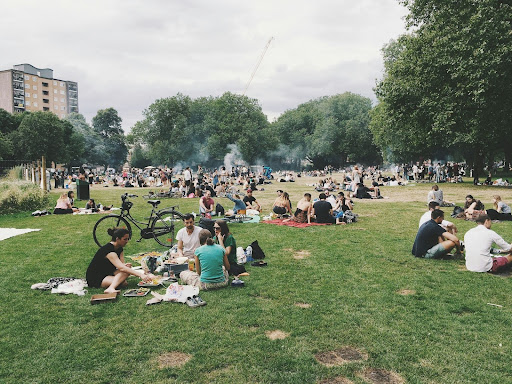
College students often lead busy and monotonous lives. During the day, classes, assignments and part-time jobs dominate. At the end of these tiring days, many return home, whether it be with family, on campus or in a local apartment. But where else can they go?
American sociologist Ray Oldenburg coined the term “third place” in his 1991 book “The Great Good Place.” He explained the importance of it in American culture: in a “third place,” members of a community can assemble “easily, inexpensively, regularly and pleasurably.” They allow people to gather outside the home without the pretext or responsibilities of work.
They are meant to be accessible to all people, no matter what their economic situation is. “Third places” aren’t meant to be consumerist traps; rather they are free or low-cost, allowing everyone to participate.
In today’s largely online world, the “third place” has gradually lost popularity among American people, especially college-aged students. There are multiple reasons behind this decline, but the most obvious is the rise of social media, particularly in the post-pandemic world.
There is a sense of community on digital platforms resulting in many believing in-person gathering for community purposes is unnecessary. Social distancing measures during the height of COVID-19 furthered this belief, leaving many young adults without the experience of in-person community bonding.
Another major factor in the decline of “third places” is the decrease in religious participation in the U.S. Churches have historically been sources of civic and social engagement, bringing people together under a shared faith.
However, the Pew Research Center found 39% of college students don’t identify with a religion. Even fewer attend a church. This eliminates a major outlet for community development.
Multiple circumstances push college students away from finding their “third place,” but it is not an impossible feat. More effort into discovering the ideal location is needed, but it’s worth it to gain a sense of casual belonging.
Join on-campus organizations
Although this may seem counterintuitive since on-campus groups are connected to the school environment, it can grow into its own entity to become a “third place.” You can interact with like-minded individuals in a setting that is voluntary, not mandatory. Many groups host events off-campus and can even connect you with people from the larger community.
Volunteer
There are countless volunteer organizations in New York City, from soup kitchens to animal shelters, constantly accepting help. This allows for multiple areas of connection: fellow volunteers and the communities being assisted. The solidarity that comes with working towards a common cause can cultivate a strong sense of community among members of the organization, making it an especially beneficial “third place.”
Explore Local Businesses
Many small businesses, such as cozy and aesthetic coffee shops, are frequented by college-aged people. Brief research into trendy, casual locations in your area can lead many to find a new hangout spot. Bring a friend or two to the location of your choosing and be open to meeting new people with similar interests. This allows for a refreshing source of conversation and relaxation.
It can be difficult to juggle a college student’s responsibilities with the innate human desire to be socially connected, especially since the “third place” has gradually become less of a priority for many. But, it is still possible. While it may take more effort than it has in the past to find this source of connection, it will be more rewarding once that sense of simple belonging is achieved.









